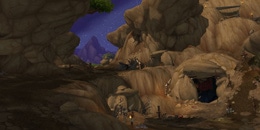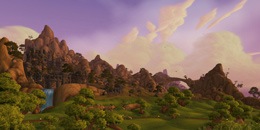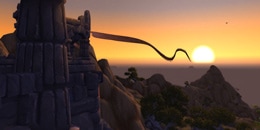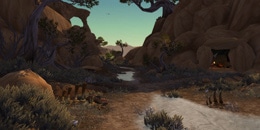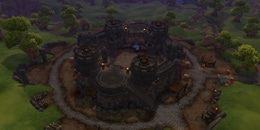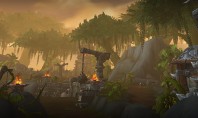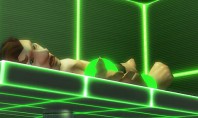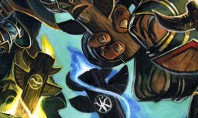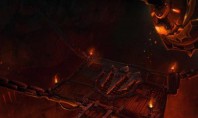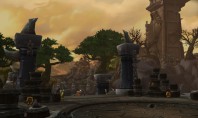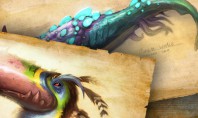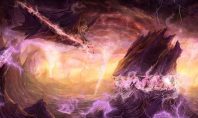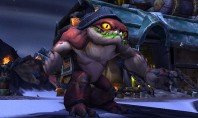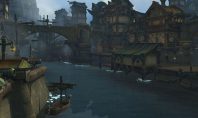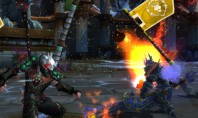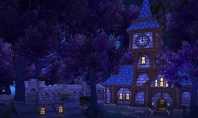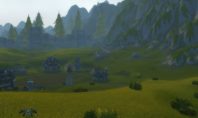WoD: Artcraft zum Level Design Teil 2

Passend zu dem bereits vor Kurzem veröffentlichten ersten Teil der neuen Arcraft-Reihe zu dem Level Design in Warlords of Draenor haben die Entwickler von Blizzard vergangene Nacht nun den zweiten Abschnitt von Blogeinträgen zu diesem Thema veröffentlicht. Dieser Artikel konzentriert sich dabei erneut auf die Zonen der neuen Erweiterung und benutzt Nagrand als Beispiel für die Erklärungen.
Artcraft – Level Design Part 2
Welcome back to our ongoing Artcraft series that takes a look at the environmental and zone design for World of Warcraft. I’m senior art director Chris Robinson, and today senior level designer Michael McInerney is going to take us through a more high-level design overview, again using Nagrand from Warlords of Draenor to illustrate our level-design philosophies.

Hello, I’m Michael, and I’ll be providing insights on some of the thought processes that go into designing an iconic zone like Nagrand. Our approach to level design begins with asking many questions, and defining the answers. The one big question we always ask ourselves is “what is the story we are trying to tell?” This usually keys off the initial pitch—in the case of Nagrand, we wanted to convey that this was the sweeping pastoral home of the Warsong clan. But we also needed to determine the specifics of how we were going to communicate that visually to the player.
The obvious answer to how we tell their story is to put their homes within the environment. But that’s not the only thing that makes a place a home. The Warsong are fairly aggressive and confident, so when you first enter the zone, you’re not so warmly greeted by their war banners and fortified towers. We also knew the Warsong clan were wolfriders and traveled in large packs. This was something we could show with the large beaten-down roads that their war bands travel along. Their home base is nestled into a wind-carved canyon, and has subtle references to an Orgrimmar long past, with buildings and living spaces shaded by cliff sides. We also knew that the way they care for their wolves says something about their culture, and is noticeably different from the reverence for them within the Frostwolf clan. We illustrated that by using animal pits to get across their relationship with their wolves, instead of integrating them into the villages as the Frostwolf would. All of these elements come together to paint a different picture of the Warsong and give them character.
Nagrand also had some equity we wanted to explore; players have experienced a shattered version of the zone in Outland, and this was a unique opportunity to provide a contrasting look. Giving places a sense of history is high on the list of zone design philosophies. Some of the more obvious ways to tell a zone’s history are with ruins, when they make sense. The Highmaul ogres were once a great power in Nagrand. Now they are on the edge of oblivion. All that’s left of their once great civilization is scattered remnants, as evidenced by their crumbling towers and roads you find throughout the zone. It’s not a coincidence that the area they occupy in the zone doesn’t exist in Outland.
We also wanted to touch on the floating islands, one of the classic visuals of Nagrand everyone remembers. We needed to figure out how could we could capture that vibe and still tell a story. One way was to create geography so delicate in places you could imagine it snapping off and floating into the sky—fel energies notwithstanding. The sweeping arches and impossible rock formations also lean toward that realm of magic, without fully committing.
The player experience, and the way a player feels when they are moving through the environments is something we’re always thinking about. Moving from zone to zone, or even within the subzones and small microcosms we create, can dramatically impact someone’s perception of their progression and the game world around them. Stay too long in one area and it can get very tiresome, but move too quickly from one to another and it can feel overwhelming. We work very closely with the quest designers to move players through the world so they can experience a dramatic environmental change at the best possible points, or when we feel they could enjoy a change of scenery.
The challenge with Nagrand was creating enough variety within a theme while maintaining an organic feel. This is a zone that is essentially grassland, but we knew we couldn’t fill a space this large with only fields. Developing an ecology that feels fresh and real is an important tenet of designing a world. Mountains flow into valleys; the edges of a forest blend naturally into open fields. The high points are dryer with scrub bushes and dead trees. The low points are lush, sometimes flooded with water. The riverbanks are a subzone in themselves, covered in reeds and thick vegetation. These areas all offer variety yet stay within the fantasy we are trying to deliver.
The way the NPCs occupy the areas should also make sense. The panther-like Saberon live in roughed out caves below the rock arches. Herds of Clefthooves roam the fields. The Highmaul for the most part occupy the mountainous areas. These relationships to the environment tell a story without any reading required.
A great zone is one that, upon entering, you immediately “get” the fantasy of, and years later you still remember that moment, and I hope we’ve achieved that with the latest incarnation of Nagrand.
Tomorrow, senior level designer Ely Cannon will explain more about the role of level designers in the creation of a zone.


